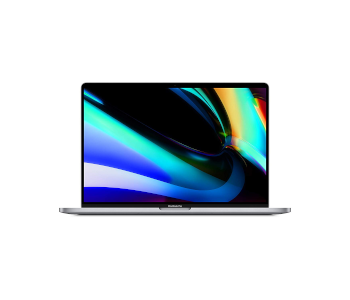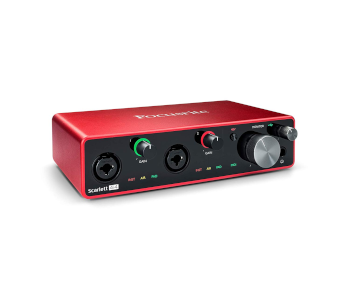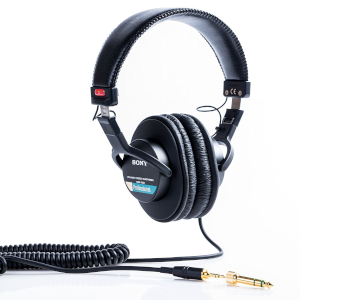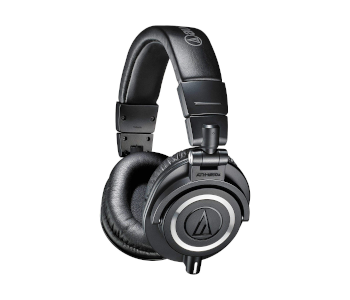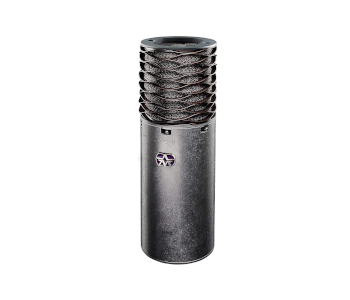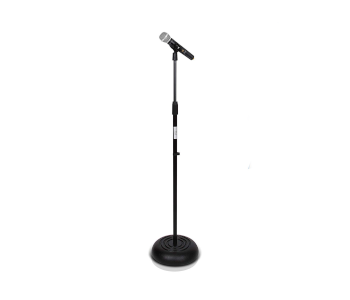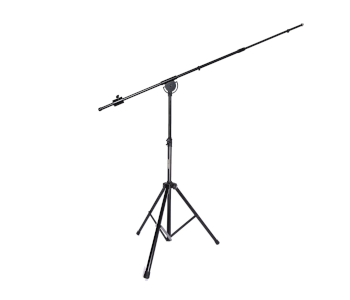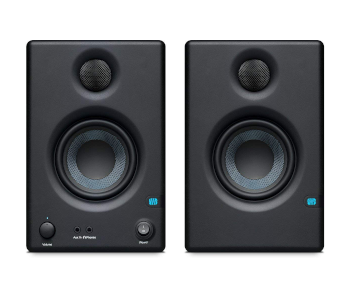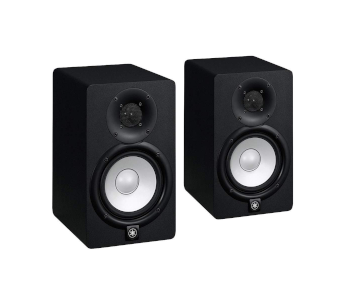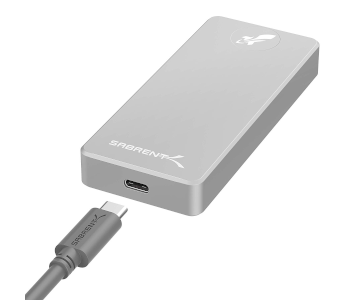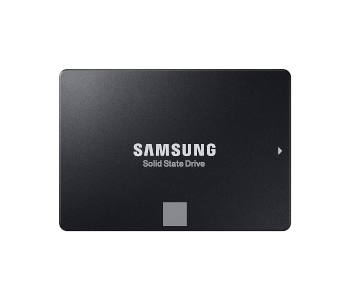Essential Recording Studio Setup Gear – What You Must-Have
This guide is for anyone who’s considering a recording studio setup. It’s not the cheapest hobby, but it is incredibly exciting. The best approach is to opt for good quality equipment that will last for years. You also need a studio that’s expandable so that you can build on what you have over time. The first step is to set your budget and then go through the list of essential items.
Recording Essentials
There are 9 recording essentials and a few supporting accessories. It’s not hard, but you need to make sure everything works in harmony. There are plenty of cheap products for each of the categories. My advice is to buy the best you can afford. Avoid gear at the bottom of the bargain basement unless it’s part of a promotional sale or a quality secondhand purchase.
Below are the 9 recording essentials needed to create your home studio setup:
- Suitable laptop or desktop computer
- DAW (Digital Audio Workstation)
- Audio Interface
- Studio headphones
- Microphone
- Mic stand
- Studio monitors
- Acoustic room treatment
- External hard drive
You may need a few accessories to support the above. For example, some mics don’t include a cable. There could be other items like adapters, stands, and storage cases.
The rest of this guide examines the above list and includes a few examples for each category.
About My ‘Recording Studio Setup’ Guide
The primary purpose of this guide is informative. The products included are all excellent examples of recording equipment. Feel free to print this page off and refer to it whenever you need a refresher. You may want to keep a simple checklist to help keep track of your potential setup.
——————————————————————————————————————-
#1 Laptops or Desktop Computers?
Laptops or desktops, Windows or Macs, those are the questions. You may know what’s right for you or have your computer already. Laptops are lightweight, powerful, and portable, and desktops are becoming the choice of yesteryear. Even so, they still check a few boxes for audio recording. They’re fast, have lots of INs and OUTs, and super-easy to customize. But desktops are not portable.
Mac laptops are often the preferred choice for music recording, but it’s just that—a preference. The options are Mac Pro, iMac, iMac Pro, and Mac Mini. The Mac Pro is the workhorse for studio recording. Those with cash to spare might want to consider the incredibly powerful iMac Pro. Windows laptops are easier to upgrade, tweak, and customize more generally than Macs. They’re cheaper too.
Powerful 14” ASUS ZenBook Ultra-Slim Laptop
Editor’s Rating: 4.5/5
The powerful ASUS ZenBook is a 14-inch, ultra-slim Windows laptop. Its NanoEdge bezel display adds to viewing comfort over extended periods. Data entry is effortless thanks to the dual-function touchpad with its quick-switchable numeric keypad. The ErgoLift design is also worth mention as it improves the typing position and user comfort. ASUS’ ZenBook ultra-slim laptop is a quiet device too.
This computer uses the 8th gen Intel Core i7-8565u Quad-Core-Processor. The biggest downside—from a recording perspective—is that it doesn’t have a touchscreen. That’s sure to bother some as more Digital Audio Workstations start to embrace touchscreen capability.
| Tech Specs |
|---|
| Brand: ASUS |
| Processor: i7-8565U |
| Display: 14 FHD |
| Screen-To-Body Ratio: 92% |
| Graphics Chip: GeForce MX150 |
| Memory Speed: 2666 MHz |
| RAM: 16GB LPDDR3 |
| Hard Drive: 512GB flash memory |
| Dimensions: 12.6 x 7.8 x 0.6” |
| Product Weight: 2.4 lbs. |
| Warranty: 1 year |
| The Pros |
|---|
| Ultra-slim, portable design |
| 8th Gen Intel CoreProcessor |
| NanoEdge bezel display |
| Dual-function touchpad |
| ErgoLift design |
| Quiet machine |
| The Cons |
|---|
| No touchscreen |
| Exaggerated battery life |
| Quite expensive |
Apple MacBook Pro 16” Space Gray w/ Touch Bar
Editor’s Rating: 4.8/5
Apple fans don’t need any convincing but keep reading if you’re on the fence. The Apple MacBook Pro 16” is an incredible powerhouse for recording artists. This model sports a beautiful Retina display with slim bezels. It has a comfortable XL touchpad, powerful Intel Core i9 CPU, and long 11-hour battery life. It’s fair to say that it’s beyond capable for speech and music recording purposes.
It’s not perfect, though, no computer is. But it does check most of the essential boxes for studio work. The most significant letdown is no touchscreen. That matters if you use a DAW that supports touchscreen technology. It also lacks a MicroSD card slot, which many users still find useful today.
| Tech Specs |
|---|
| Brand: Apple |
| Processor: Intel Core i9 |
| Display Size: 16 Retina |
| Graphics Chip: AMD Radeon Pro 5500M |
| Max Battery Life: 11 hours |
| Hard Drive: 512GB up to 8TB |
| RAM: 16GB up to 64GB |
| Memory Speed: 2666MHz |
| Dimensions: 14.09 x 9.68 x 0.64” |
| Product Weight: 4.3 lbs. |
| The Pros |
|---|
| Stunning Retina display |
| Slimmer bezels |
| Large screen size |
| Powerful CPU |
| Comfortable XL touchpad |
| Touch Bar, Touch ID |
| Ultrafast SSD |
| Six-speaker system |
| Long battery life |
| The Cons |
|---|
| No touchscreen |
| No MicroSD card slot |
| High price tag |
DAW (Digital Audio Workstation)
Music and audio producers use a Digital Audio Workstation or DAW to record. DAW can be a software program, a hardware console, or a configuration of both. Most DAW is of the software variety. It lets you create and then manipulate the recorded audio. It’s an essential tool for special sound effects, Foley, music, podcasts, and so on. DAWs can differ, but they all share similar abilities.
DAW lets you record voice, compositions, live or virtual instruments, and all things audio. The best thing about DAW is that you can see and edit whatever goes into it. Examples are to arrange tracks, or musical notes, and automate how or when the audio enters or leaves a timeline. It’s then a case of mixing the creation. If you can think it, there’s a good chance you can do it in DAW.
DAW System Requirements
A DAW must be able to work with your system. DAW system requirements include:
- Windows and or macOS versions
- Minimum Intel® Core™ processors
- Minimum available hard drive space in GB
- Minimum GB RAM requirement
- Internet connection for installation and program activation
- Minimum monitor resolution
- Touch-enabled monitor (not all DAWs)
The more powerful your system, the better the DAW will function. Check out the Studio One page for a typical list of system requirements for its program.
Studio Audio Interface
An audio interface (AI) is at the heart of a home recording studio. It takes analog signals and converts them to digital. And the playback function lets you connect headphones or studio speakers to listen to what you’ve done. For that to happen, the AI converts the digital signal back to analog. In short, an audio interface helps you to record voice, vocals, and musical instruments in the highest quality.
Connectivity and Controls in Brief
Here’s a quick breakdown of the connection and controls of a standard audio interface:
- Connects directly to a computer or iPad
- Connection can be via USB, FireWire, PCMCIA to ExpressCard, and PCI
- The AI performs analog-to-digital conversion and vice versa
- Users can edit the stored audio streams directly from a computer
- An audio interface has various inputs for mics and instruments
- Controls may include Gain, Volume, Pad (Attenuator), Source, and Direct Monitor
- Some audio interfaces have midi inputs and outputs for keyboards
- The audio interface gives high-quality playback as well as recordings
Internal Vs. External Audio Interface
Computers have sound cards, and that’s what an audio interface is. So, why invest in a dedicated external option? Why not use the internal one that comes with a computer? The answer is limited sound quality and minimal Input/Output or I/O. A built-in sound card is also prone to jitter, electromagnetic interference, and latency. Thus, they’re not ideal for pro-quality recording.
Below are 2 examples of popular audio interfaces for use in the home studio.
BEHRINGER 4CH USB Audio Interface for Mics & Instruments
Editor’s Rating: 4.4/5
The BEHRINGER U-Phoria UMC404HD 4-Channel Audio Interface is for recording mics and instruments. It’s little black boxes like this one that brings mixes and recordings to life. This USB interface model has 4 inputs, 4 outputs, and MIDAS-designed microphone preamps. Users experience ultra-clear performance with zero-latency monitoring, which means no lag and no delay.
This audio interface gives excellent value overall. It’s got 48V phantom power via USB port. The box is rugged yet lightweight, with a small form factor and simple connectivity. Novice users will also find it beginner-friendly. On the negative side, the interface only has a single XLR input and no 1/4” output for monitors. An extra headphone monitor output would have also been welcome.
| Tech Specs |
|---|
| Brand: Behringer |
| Form Factor: Desktop |
| Connectivity: USB 2.0 |
| Number of Inputs: 4 |
| Number of Outputs: 4 |
| Number of Preamps: 4 |
| Phantom Power: +48V |
| A/D Resolution: 24-bit /192 kHz |
| MIDI I/O: In/Out |
| Dimensions: 11.5 x 5.1 x 1.8” |
| Product Weight: 2.65 lbs. |
| The Pros |
|---|
| Feature-packed audio interface |
| Rugged and lightweight |
| Small and portable |
| Simple connectivity |
| Multiple inputs/outputs |
| MIDAS-designed mic preamps |
| Zero-Latency Monitoring |
| Phantom power |
| Excellent value |
| The Cons |
|---|
| Only has 1 XLR input |
| Only 1 headphone monitor |
| No 1/4 output for monitors |
3rd Gen Focusrite Scarlett 4i4 USB Audio Interface
Editor’s Rating: 4.8/5
Focusrite Scarlett is well-known in the recording world. This product is the 4i4 (3rd Generation) USB Audio Interface with Pro Tools. It’s a great choice for artists who need a portable interface to expand their recording setup. Its switchable air mode enhances vocals and instruments with brighter, more open sounds. The device also has Phantom power for use with condenser type microphones.
Physical Features
On the front of the unit are two instrument inputs and pads for each of the mic preamps. The pads are essential for recording loud sound sources. There’s a large, smooth monitor control for adjusting playback levels. The high-fidelity headphone output has its own dedicated volume control. On the rear of the interface is a Type-C, USB 2.0 port for connecting PC or Mac computers.
Other physical features include a MIDI I/O, 2 balanced monitor outputs, and 4 balanced line inputs. The main downside to this audio interface is the setup procedure. Novice users may find it fiddly, frustrating, and time-consuming. Skilled users shouldn’t experience any problems, though.
| Tech Specs |
|---|
| Brand: Focusrite |
| Form Factor: Desktop |
| Connectivity: USB Type-C |
| Protocol: USB 2.0 |
| Phantom Power: +48V |
| Preamps: 2, Pads: 2 |
| Instrument Inputs: 2 |
| Line Input: 4 |
| Analogue Outputs: 4 |
| Headphone Outputs: 1 |
| A/D Resolution: 24-bit/192 kHz |
| Dimensions: 4.7 x 7.3 x 1.9” |
| Product Weight: 0.98 lb. |
| The Pros |
|---|
| Well-established brand |
| Switchable air mode |
| Phantom power |
| 2 instrument inputs |
| Large monitor control dial |
| HiFi headphone output |
| Headphone volume knob |
| The Cons |
|---|
| Time-consuming to set up |
Studio Headphones Matter
No home studio setup is complete without headphones. Part of the recording process is to monitor what you do as you do it. There are lots of headsets to consider, but some are much better than others. The preferred choice for recording purposes is the closed-back variety. That’s because they’re 100% sealed around the back and prevent noise from bleeding out.
Open Back Vs. Closed Back
Open-back headphones don’t block the outside world like the closed-back types. That’s not necessarily a bad thing as it depends on user preference. Open-back headphones also breathe better. That’s worth consideration if you expect to wear them for extended periods. The ‘in your head’ effect of closed-back headphones is not something that everyone’s comfortable with.
I’ve included one of each in the headphone samples below. Be sure to read any user reviews, especially from those who use them for home recording and mixing applications.
Sony MDR7506 Pro Large-Diaphragm Headphones
Editor’s Rating: 4.7/5
Sony’s MDR7506 Pro headphones use neodymium magnets and 40mm drivers for clear, powerful sound. The closed-ear design cuts out most external noises and is comfortable to wear for extended periods. The product folds up for secure storage and comes with its own soft travel case. The 9.8ft heavy coiled cord is either a pro or a con, depending on who you ask and usage. It’s also hardwired.
| Tech Specs |
|---|
| Brand: Sony |
| Type: Dynamic, closed-ear |
| Magnet: Neodymium |
| Frequency Response: 10-20kHz |
| Impedance: 63 Ohms |
| Sensitivity: 106dB |
| Cord Length: 9.8ft |
| Product Weight: 8.1 oz. |
| The Pros |
|---|
| Adjustable headphone design |
| Rugged, built to last |
| Superb sound for the price |
| Comfortable with extended use |
| Closed-back design isolates sound |
| Decent cord length |
| 1/4-inch jack adapter |
| Soft storage/carry case |
| The Cons |
|---|
| Heavy coiled cord |
| Cannot detach the coiled cord |
Audio-Technica ATH-M50x Pro Studio Headphones
Editor’s Rating: 4.8/5
The Audio-Technica ATH-M50x Pro are quality studio headphones. It’s a bestselling product that boasts exceptional sonic performance with deep bass response. The headset exploits large 45mm aperture drivers, rare-earth magnets, and copper-clad aluminum voice coils. The earcups swivel by 90°, which is ideal for one-ear monitoring. The headphones come with 2 detachable cables.
| Tech Specs |
|---|
| Brand: Audio-Technica |
| Application: Tracking, mixing, personal |
| Collapsible: Yes |
| Driver Size: 45mm |
| Sensitivity: 98dB |
| Impedance: 38 ohms |
| Frequency Response: 15-28kHz |
| Earcup Swivel: 90 both directions |
| Dimensions: 11.4 x 10 x 4.1” |
| Weight (w/o Cable): 10 oz. |
| The Pros |
|---|
| Studio-grade headphones |
| Exceptional sound quality |
| Outstanding noise cancellation |
| Foldable and adjustable |
| Detachable cables |
| Soft storage/travel pouch |
| Superb value |
| The Cons |
|---|
| Earcups may prove too small for wearers with larger ears |
| Can get a little uncomfortable with prolonged wearing |
The Studio Microphone
Microphones come in all shapes, sizes, quality, and price ranges. It can seem an impossible choice for anyone new and inexperienced. The first step is to know how to break down your needs and expectations. Some mics are best suited for specific applications, so that already reduces choice. Do a little homework so that you can make a better-informed decision (see next).
You may want to use the points below as a personal checklist.
- Set a min and max budget, but avoid the low bottom-end
- Know the genre(s) you plan to record
- Get familiar with microphone specs and what they tell you (see below)
- Dynamic or Condenser mic? Know the difference
- What microphone accessories does your studio need
There are some essential studio accessories for microphones. They include cables, stands, pop filters, shock mounts, and portable vocal booths. You may also need a mic activator.
Be Tech Spec Savvy
There are plenty of easy-to-grasp articles online that explain microphone tech specs in plain English. Your home studio is quite a technical space anyway, so it pays to learn about these things.
The table below shows the mic specs that every budding audio engineer should know:
| Microphone Specification | Done |
|---|---|
| Microphone Type: | ✔ |
| Build Materials: | ✔ |
| Capsule Size: | ✔ |
| Connector: | ✔ |
| Dynamic Range: | ✔ |
| Impedance: | ✔ |
| Maximum SPL: | ✔ |
| Mic Polar Patterns: | ✔ |
| Output: | ✔ |
| Power Requirements: | ✔ |
| Self-Noise or Equivalent Noise Rating: | ✔ |
Buy the best mic that you can afford at the time once you know what you need and why. A decent quality mic should last for many years and is an excellent investment.
The examples below get lots of positive feedback from real users. They may or may not be the right mic for you. It’s still worth visiting them to get familiar with the specs and terminology.
Rode NT1-A Anniversary Condenser Mic Package
Editor’s Rating: 4.7/5
The Rode NT1-A Anniversary is one of the best value condenser microphones out there in its class. It delivers a pleasing warmth, has an impressive dynamic range, and high SPL ability. The mic works well for recording vocals and instruments. It’s quiet too, thanks to the low 5dB(a) self-noise level. The kit comes with a shock mount, studio-grade pop filter, long cable, and a useful instruction video.
| Tech Specs |
|---|
| Brand: Rode |
| Type: Studio condenser |
| Connection: XLR 3-pin |
| Polar Pattern: Cardioid |
| Power Supply: Phantom +48V |
| Max SPL: 137dB |
| Frequency Range: 20Hz–20kHz |
| Max Output Level: 13.7mV |
| Dimensions: 15.2 x 4.5 x 11” |
| Kit Weight: 4.6 lbs. |
| Warranty: 1 year |
| The Pros |
|---|
| Bestselling studio microphone |
| Exceptional sound for its class |
| High-quality construction |
| Extended dynamic range |
| Works for vocals & instruments |
| Includes shockmount & pop filter |
| Long cable included |
| Protective storage pouch |
| Instructional video |
| The Cons |
|---|
| Takes a while to master |
Aston Microphones Origin Large-Diaphragm Condenser Mic
Editor’s Rating: 4.6/5
The Aston Microphone Origin is a large-diaphragm condenser mic with a cardioid pickup. It’s designed and manufactured in the UK by professional engineers and artists. It sports a rugged, stainless steel, laser-cut, etched body. The mic comes with a built-in steel mesh knit pop filter and custom molded end caps. It’s a versatile, lovingly-engineered studio mic, ideal for vocalists and instrumentalists.
| Tech Specs |
|---|
| Brand: Aston Microphones |
| Mic Type: Studio condenser |
| Connection: XLR |
| Power Supply: Phantom 48V |
| Polar Pattern: Cardioid |
| Pad: -10dB |
| High-Pass Filter: 80Hz |
| Frequency Range: 20Hz–20kHz |
| Max SPL: 127dB |
| Mic Sensitivity: 23.7 mV/Pa |
| Product Dimensions: 20 x 10 x 10” |
| Product Weight: 15.8 oz. |
| Warranty: 3 years |
| The Pros |
|---|
| Designed and made in the UK |
| Exceptional rugged build |
| Warm, crisp sound |
| Suits both vocals and instruments |
| Low noise microphone |
| Built-in mesh-knit pop filter |
| Custom-molded end caps |
| Integrated XLR & stand adapter |
| Long warranty |
| The Cons |
|---|
| Heft (also a pro) |
| Single polar pattern |
The 101 of Microphone Stands
Every studio microphone needs a stand, and the sturdier, the better. They are among the cheaper accessories but essential nonetheless. There’s more to choosing a stand than first meets the eye. You don’t want one that’s too big or bulky if you run a mobile type studio. And nor do you want one too light and flimsy that knocks over with the slightest touch.
Types of Microphone Stands
There are 6 microphone stand categories, and only you can decide which design fits your purpose. You also need to consider the studio space and the specific mic applications.
- Tripod stand
- Tripod Boom
- Desktop
- Round base
- Low profile
- Overhead
A studio mic stand should be hard to knock over, rugged, and easy to use. Not all stands are. Other considerations are clip types, quality of the clutch, and a microphone’s weight. Some of the cheaper boom arms are not strong enough to support heavier mics for extended periods.
Pyle Universal Entry-Level Mic Stand W/ Heavy Base
Editor’s Rating: 4.4/5
The Pyle mic stand is a superb entry-level choice for around 20 dollars. Its sturdy die-cast base keeps it firmly on the ground, making it topple-resistant. The product is easy to assemble out of the box and offers flexible height adjustments from 33.5” to 60.24”. Novice buyers often overlook the maximum height, hence the mention here. This one may be a tad on the short side for taller stand-up users.
The stand is also quick to disassemble if you need to store it away or travel. Pyle’s mic stand is an excellent entry-level product for use in studios, on the stage, or at an office.
| Tech Specs |
|---|
| Brand: Pyle |
| Color: Black |
| Stand Type: Round base |
| Height Adjustable: Yes |
| Base Diameter: 9.8” |
| Base material: Steel alloy |
| Dimensions: 1.7 x 8.9 x 8.9” |
| Product Weight: 9.92 lbs. |
| The Pros |
|---|
| Excellent value mic stand |
| Easy to assemble and adjust |
| Heavy-duty die-cast base |
| Non-slip rubber |
| Pivot angle adjustable clip |
| Quick and easy to disassemble |
| The Cons |
|---|
| Too short for some users |
| Plastic mic holder feels flimsy |
LyxPro SMT-1 Heavy Duty Professional Mic Stand
Editor’s Rating: 4.5/5
The LyxPro SMT-1 is a pro-level microphone tripod stand that costs around 100 dollars. It has a rugged build with an overhead telescopic studio boom arm. That makes it a versatile product for a wide variety of people and instrument applications. The adjustable counterweight means it can accommodate all mic types, be they big, small, light, or heavy. And the included clips help to keep the cables tidy.
| Tech Specs |
|---|
| Brand: LyxPro |
| Color: Black |
| Stand Type: Overhead studio tripod |
| Telescoping Boom Range: 45–76” |
| Extendable Shaft Height: 59–93” |
| Maximum Stand Height: 169” |
| Product Weight: 15 lbs. |
| Warranty: 1 year limited |
| The Pros |
|---|
| Rugged, heavy-duty construction |
| Professional microphone stand |
| Overhead telescopic boom |
| Collapsible design |
| Moveable counterweight |
| Extendable shaft height |
| Non-slip feet |
| Accommodates all mic types |
| Includes cable clips |
| The Cons |
|---|
| Plastic adjustment knobs |
Studio Monitors
Prepare for a surprise if you’ve never listened to sound with a flat response curve. Studio monitors may seem lacking compared to regular stereo speakers with less bass and more noticeable highs. Don’t worry—they’re supposed to sound different. And it doesn’t take long for the ears to adjust. The whole purpose of studio monitors is to reproduce sounds accurately, and not for general listening.
This short guide doesn’t get into the specifics. The four points below highlight the essential areas to consider before you invest in any studio monitors.
- Amplifier to drive the speakers
- Room adjustment controls and EQ
- The speakers deliver a wide dynamic range
- Power considerations (more is better)
You can use the two examples below to learn more about studio monitor specs and capability.
PreSonus E4.5-4.5” 2-Way Near Field Studio Monitor
Editor’s Rating: 4.7/5
The Presonus E4.5-4.5” is an affordable example. It’s a pair of 2-way near-field studio monitors with 4.5” Kevlar low-frequency transducers. They have a 1” ultra-low mass silk dome tweeter with high-frequency transducer and 50W class AB amplification. The Eris E4.5 studio monitors guarantee a smooth, accurate frequency response that makes it easier to work with mixes and tracks.
See the table below for further details:
| Tech Specs |
|---|
| Brand: PreSonus |
| Type: Near field studio monitors |
| Frequency Response: 70Hz-20kHz |
| LF/HF Amplifier Power: 25W |
| Peak SPL (@1m): 100dB |
| Low Cut: Flat, 80Hz, 100Hz |
| Acoustic Space Control: Flat, -2dB, -4dB |
| Dimensions: 16.5 x 9.1 x 11.8” |
| Product Weight: 13.01 Lbs. |
| The Pros |
|---|
| Well-made built to last |
| Good choice of ports |
| All cables included |
| Convenient front controls |
| Pleasing aesthetics |
| Superb sound for the size |
| Balanced outputs (TRS) |
| Affordable product |
| The Cons |
|---|
| Shortish connecting cable |
| Case prone to scratching |
Yamaha HS Series HS5 2-Way Studio Monitor (Pair)
Editor’s Rating: 4.9/5
The Yamaha HS Series HS5 is a 2-Way 70W pair of studio monitors. The heavy-duty enclosure makes sure unwanted resonance doesn’t get to influence the sound. The monitors have dedicated power amps that work in perfect harmony with the woofers and tweeters. The rear controls include Room Control and High Trim—the latter used to regulate high-frequency response.
See the table below for further details:
| Tech Specs |
|---|
| Brand: Yamaha |
| Color: Black |
| Material: MDF |
| Total Output Power: 70W |
| Power Consumption: 45W |
| Type: 2-Way Bi-amped monitors |
| Frequency Response: 54Hz–30kHz |
| Crossover Frequency: 2 kHz |
| Input Sensitivity: -10dBu /10 kΩ |
| Inputs: Balanced XLR3-31, TRS |
| Controls: Level, High trim, Room |
| Dimensions: 22 x 15 x 18” |
| Product Weight: 36 lbs. |
| The Pros |
|---|
| Heavy-duty, well-made monitors |
| Highly-accurate sound reproduction |
| High-performance drivers |
| Large magnets |
| Dedicated power amps |
| Room Control |
| High Trim response control |
| Low resonance enclosure |
| Uses noise reduction technology |
| The Cons |
|---|
| Could use a subwoofer |
Acoustic Room Treatment
Ambient or background noise can often cause unwanted distractions in a home studio setup. The good news is you can treat a room for very little outlay. Affordable foam panels can remove excess natural reverb. However, it’s easy to overdo treatment to the point where the space sounds dead if you’re inexperienced. In that case, diffusers can help to add and scatter a few reflections.
Bass Traps are a type of acoustic energy absorber that do an excellent job of absorbing bass, mid, and high frequencies. Get to know what kind of treatment your space needs before you do anything. For example, does it need simple soundproofing or acoustic treatment? The former minimizes any unwanted noise that travels in and out of a room. The latter controls sound reflections.
Learn how to evaluate the acoustics of your recording space to prevent buying the wrong gear. There are plenty of YouTube tutorials if you need guidance with acoustic treatment clap testing.
External Hard Drive
The only way not to lose crucial data is to back it up. Making copies of your saved work is the least glamorous job in a home studio, but the most critical. And sod’s law says the day you need a backup is the day you failed to make one. Seriously, losing your hard work is the most annoying and depressing feeling ever. It happens, and those studio sessions are lost forever without a backup.
Even worse than losing personal projects is to lose the work of clients if you have any. Internal hard drive failures are more common that most people realize. I keep an identical copy of all my work on another computer and an external hard drive. I archive completed projects in the cloud as well. External hard drives are also vital tools if you record in studios other than your own.
Types of Hard Drive
You have two types of external hard drives to consider. The older technology is the hard disk drive or HDD. It’s the cheapest option and gives more storage space for a lot less money. However, these drives are bigger and heavier than the newer Solid State Drives (SSD). Not only that, but the read/write speeds are slower too. My suggestion is to opt for an SSD if budget allows.
I’ve included both HDD and SSD drives in the example below.
Transcend Rugged 1TB USB StoreJet 2 External Hard Drive
Editor’s Rating: 4.4/5
The Transcend StoreJet Classic is a 1TB USB 3.1 Gen 1, external hard disk drive (HDD). Its rugged build boasts 3-stage anti-shock protection. That means it passes US military drop-test standards. The StoreJet 25M3 has a convenient 1-touch auto-backup button. The 5Gbps transfer speeds are impressive for an HDD. The product comes with some useful Data Management Software.
| Tech Specs |
|---|
| Brand: Transcend |
| Color: Iron gray |
| Technology: HDD 2.5 |
| Transfer Rates: Up to 5Gbps |
| Capacity Range: 1TB (2TB available) |
| Connection(s): Micro USB–USB Type-C |
| Shock Protection: Yes |
| Dimensions: 5.1 x 3.2 x 0.7” |
| Product Weight: 8 oz. |
| Warranty: 3 years |
| The Pros |
|---|
| USB 3. 1 Gen 1 interface |
| 3-stage shock protection |
| One-touch backup button |
| Data management software |
| Data recovery software |
| Super-fast transfer speeds |
| 2 colors available |
| Excellent value |
| The Cons |
|---|
| No password protection |
Sabrent Rocket Pro 1TB USB SSD Drive
Editor’s Rating: 4.3/5
The Sabrent Rocket Pro (SB1TB-PRO) is a plug-n-play external SSD, which makes it OS independent. You can use the Rocket Pro seamlessly with any Windows or Mac computers. It has an ultra-slim design and an aluminum shell that’s both sleek and durable. This is a versatile drive for recording studios, with high transfer speeds up to 10Gbps, and up to 1000MB/s with a USB 3.2 interface.
| Tech Specs |
|---|
| Brand: Sabrent |
| Color: Space gray |
| Technology: SSD |
| Transfer Speeds: 10Gbps & 1000MB/s |
| Capacity Range: 1TB |
| Connection(s): USB 3.2 |
| Shock Protection: None, though rugged |
| Dimensions: 4.1 x 1.8 x 0.6” |
| Product Weight: 15.2 oz. |
| Warranty: 1 year |
| The Pros |
|---|
| Sleek design w/ aluminum shell |
| Lightweight, durable, & portable |
| Works with Windows and Mac OS |
| Lightning-fast transfer speeds |
| Effective heat management |
| Supports SMART/TRIM commands |
| Advanced wear leveling |
| Bad block management (BBM) |
| Over-provisioning |
| The Cons |
|---|
| No protective bumper skin |
| Expensive |
Samsung SSD 860 EVO 2TB SATA III Internal Drive
Editor’s Rating: 4.9/5
This is an internal drive as old ones can—and do—die, or the studio computer needs and upgrade.
Samsung designed its 860 EVO to work seamlessly with laptops and desktop PCs. Its 2TB internal SSD uses 3D V-NAND technology and is reliable, durable, and ultra-fast. Its read speeds can reach 550MB/s and write speeds up to 520MB/s—perfect for studio work. The SSD comes with a Data Management Software suite that includes data security. Samsung stands by this product with a 5-year warranty.
Note: Check the drive’s compatibility with your computer’s model number before you order.
| Tech Specs |
|---|
| Brand: Samsung |
| Color: Charcoal gray |
| Technology: Internal SSD |
| Hardware Platform: PC, Mac |
| Hard Disk Form Factor: 2.5” |
| Hardware Interface: SATA 6.0 Gb/s |
| Transfer Speeds: Up to 550MB/s |
| Capacity Range: 2TB |
| Connection(s): Internal |
| Dimensions: 3.94 x 2.76 x 0.27” |
| Product Weight: 2.12 |
| Warranty: 5 years |
| The Pros |
|---|
| Easy to install |
| Works with Windows & Mac OS |
| Durable build quality |
| Backward compatible |
| Samsung V-NAND Technology |
| Fast read/write speeds |
| Secure data encryption |
| Multiple form factors available |
| Samsung Magician Data Software |
| The Cons |
|---|
| Expensive |
Contents
- Recording Essentials
- About My ‘Recording Studio Setup’ Guide
- #1 Laptops or Desktop Computers?
- Powerful 14” ASUS ZenBook Ultra-Slim Laptop
- Apple MacBook Pro 16” Space Gray w/ Touch Bar
- DAW (Digital Audio Workstation)
- DAW System Requirements
- Studio Audio Interface
- Connectivity and Controls in Brief
- Internal Vs. External Audio Interface
- BEHRINGER 4CH USB Audio Interface for Mics & Instruments
- 3rd Gen Focusrite Scarlett 4i4 USB Audio Interface
- Physical Features
- Studio Headphones Matter
- Open Back Vs. Closed Back
- Sony MDR7506 Pro Large-Diaphragm Headphones
- Audio-Technica ATH-M50x Pro Studio Headphones
- The Studio Microphone
- Be Tech Spec Savvy
- Rode NT1-A Anniversary Condenser Mic Package
- Aston Microphones Origin Large-Diaphragm Condenser Mic
- The 101 of Microphone Stands
- Types of Microphone Stands
- Pyle Universal Entry-Level Mic Stand W/ Heavy Base
- LyxPro SMT-1 Heavy Duty Professional Mic Stand
- Studio Monitors
- PreSonus E4.5-4.5” 2-Way Near Field Studio Monitor
- Yamaha HS Series HS5 2-Way Studio Monitor (Pair)
- Acoustic Room Treatment
- External Hard Drive
- Types of Hard Drive
- Transcend Rugged 1TB USB StoreJet 2 External Hard Drive
- Sabrent Rocket Pro 1TB USB SSD Drive
- Samsung SSD 860 EVO 2TB SATA III Internal Drive



